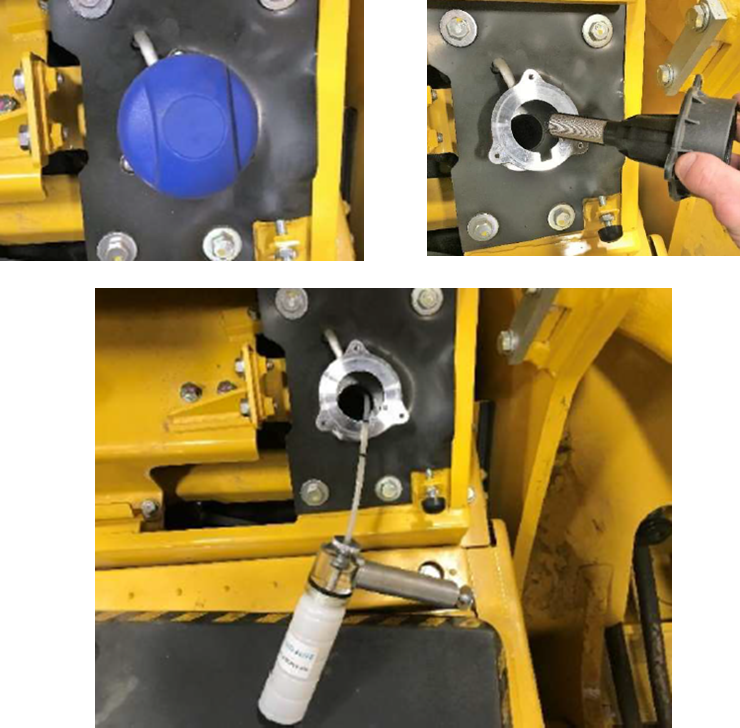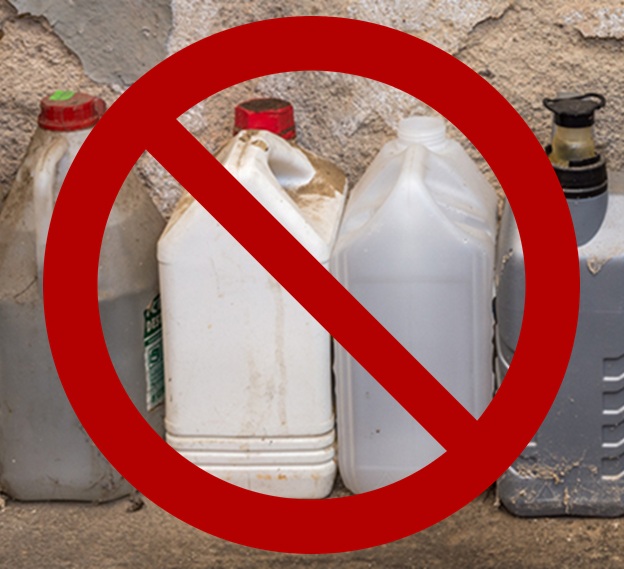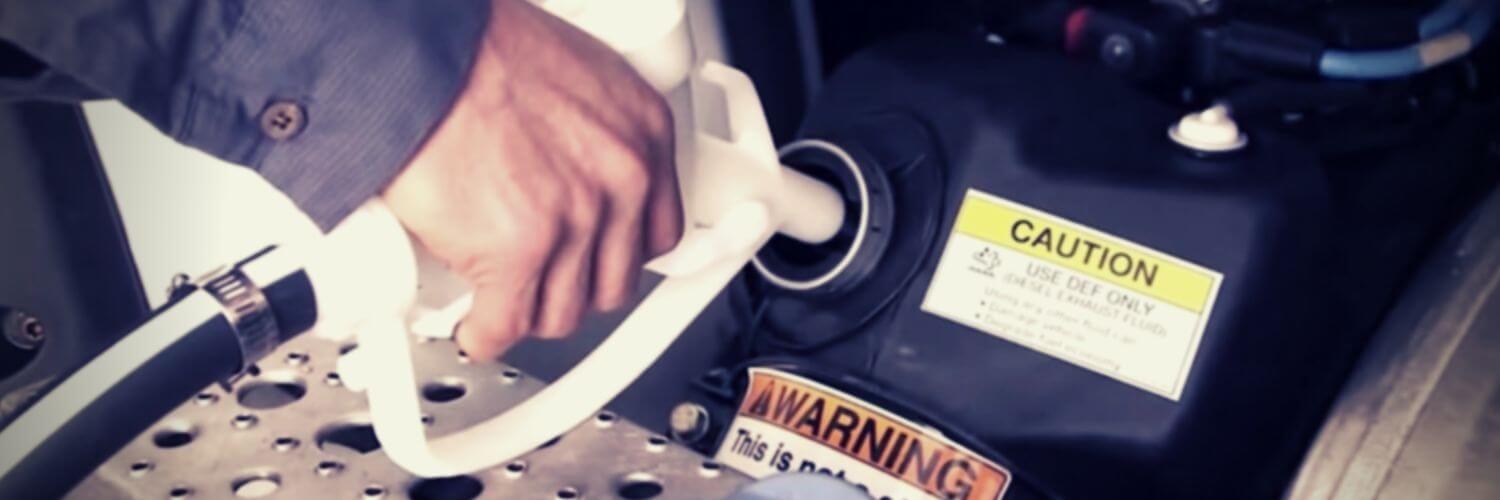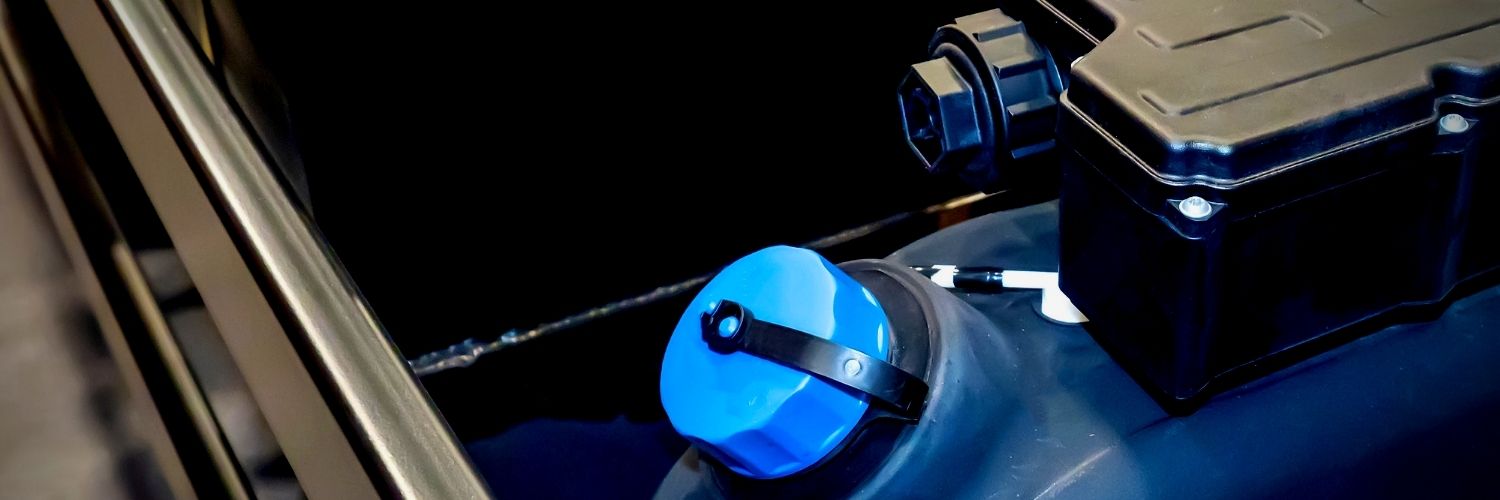- Clean area around DEF tank fill cap
- Remove DEF tank filler neck (if equipped)
- Thread sample bottle and tubing onto suction pump
- Insert plastic tubing into DEF tank
- Pull plunger on suction pump to collect sample
Diesel Exhaust Fluid (DEF) plays a critical role in reducing emissions from modern diesel fuel engines. DEF fluids have long been used in on-highway truck engines, and more recently in off-road mining and construction equipment.
Poor-quality DEF, due to contamination, dilution or other issues, can damage your Selective Catalytic Reduction (SCR) system, cause costly repairs, and even void warranties.
Routine DEF testing ensures product quality, protects your equipment, and keeps your operation running clean and compliant.
NOTE: Fluid Life only performs DEF testing and analysis. We do not sell DEF nor do we provide recommendations on where to buy this product. Please contact a local dealer or your vehicle manufacturer for this information.
Common Diesel Exhaust Fluid Issues
When diesel exhaust fluid quality deteriorates, you may experience:
- Increased DEF consumption or reduced DEF effectiveness
- Equipment failure (i.e. engine derating or complete shutdown), SCR system malfunctions or component damage (i.e. DEF dosing pump and diesel particulate filter)
DEF quality can be affected by:
- Over-dosing: too much DEF may not fully hydrolyze, leading to crystalized deposits in the exhaust or injector nozzle
- Contamination: improper storage or handling of DEF can result in dirt entry, rust or tank scale
- Dilution: topping up DEF with water will dilute the solution with the resulting drop in NOx neutralization effectiveness
- Cold Weather: DEF may gel or freeze in colder climates, which may prevent engine operation
- Other Fluids: contamination from other fluids being introduced to the DEF tank (e.g. diesel fuel, coolant, engine oil) can cause damage to the SCR system and engine shutdown
DEF Testing
Placeholder
SCR systems are part of the engine powertrain configuration. Contaminants or impurities in your DEF could cause the SCR system in your vehicle to malfunction or fail. Should a fault code for your DEF system occur, testing should be done to detect the cause of the issue.
Placeholder
There are two primary methods of testing DEF: field testing and laboratory testing. Download the quick reference recommended DEF test overview.
Field Testing
- Visually inspect DEF for color and clarity. DEF is naturally clear – if it appears cloudy or colored, you may have an issue with age or contamination. If engine or hydraulic oil is present, it will form a separate layer in the sample taken. You can also visually inspect the DEF filter and storage containers for dirt or metal debris.
- Do a “smell test”. If diesel fuel has inadvertently been added to the DEF tank, you should be able to smell the fluid in the tank or sample.
- Inspect exhaust piping and DEF injectors for presence of crystallization. Crystallization builds up over time and testing of DEF currently in the tank may or may not indicate issues which could cause crystallization,
- Use a handheld DEF refractometer to measure the concentration specifications of the fluid to ensure 32.5% of the fluid is urea.

Laboratory Testing
- Crystallization Testing:
- ICP Spectrometry can detect the presence of minerals in DEF liquid
- DEF Delivery and Bulk Storage:
- Request the Certificate of Analysis from your DEF supplier
- If troubleshooting quality issues, submit a sample for testing according to the ISO 22241-1 standard
- Contamination Testing:
- ISO Particle Count or Insoluble Matter test
- Urea Concentration:
- Urea Content (Refractive Index Method)
- Urea Content (from Nitrogen)
Resources
Sampling Procedures

Storage
Review storage procedures and containers regularly to reduce the possibility of experiencing contamination in your DEF tank and SCR system. DEF is corrosive to aluminum so it should be stored in ISO-approved containers such as stainless steel, polypropylene, and high-density polyethylene.
Avoid reusing DEF containers, even approved ones, to reduce possibility of dirt, metal or other fluid contamination.

More Insights
Common DEF Problems & How to Test for Them
Diesel Exhaust Fluid (DEF) is a blended aqueous urea solution of 32.5% high purity urea and 67.5% deionized water used…
Handling DEF: Tips & Testing
Diesel Exhaust Fluid (DEF) is now commonplace – it’s found across industries using diesel powered engines in their equipment –…
Accidents Happen: Detecting DEF Contamination Using Oil Analysis
Accidents can happen – even experienced professionals make mistakes from time to time. Take for example the accidental addition of…

Contact Us!
We're always happy to help with any questions you may have regarding technical support, training, sales, billing or other services.




